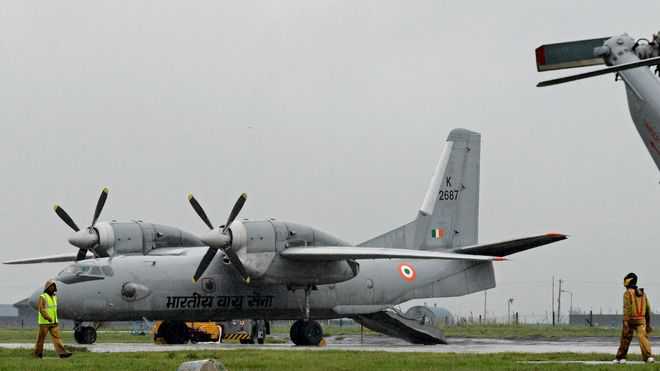21YEAROLD JASBIR, A SEPOY WHO SHOT HIS TWO SENIORS DEAD, HAD JOINED THE ARMY OVER A YEAR BACK
DHARAMSHALA: An army jawan shot his two colleagues dead before committing suicide in Dharamshala military station in Kangra district of Himachal Pradesh, police said on Monday.

“The incident took place at around 2.15 am inside the cantonment,” he added.
According to the information, 21-year-old Sepoy Jasbir Singh fired at Havildar Hardeep Singh, 45, and Naik Harpal Singh, 35, with his INSAS rifle before shooting self.
Jasbir was a native of village Rajgarh of Barnala, while Hardeep was from village Marhana, district Tarn Taran, and Harpal from village Thundi, district Gurdaspur in Punjab.
Jasbir had joined the army a year-and-a-half ago while Hardeep and Harpal have completed 23 and 18 years in service, respectively. “Circumstances in which Jasbir took the drastic step are yet to be ascertained,” said the ASP. “A case under Section 302 has been registered at the McLeodganj police station. We are investigating all possible angles to find out the exact reason,” said Badri, adding Jasbir fired 10 rounds on his colleagues.
He said a team of forensic experts from Regional Forensic Science Laboratory (RFSL) Dharamshala visited crime spot and collected samples.
Commanding Officer (CO) of 18 Sikh Regiment at Dharamshala cantonment Navdeep Brar said prima facie it seems that Jasbir, after coming back from the duty, had an argument with the other two soldiers and in a fit of rage he shot them and later himself. Jasbir was on sentry duty in the cantonment mess.
Army has ordered court of inquiry into the incident.
Meanwhile, bodies of the deceased soldiers have been sent to Dr Rajendera Prasad Government Medical College Tanda.
It is the first fratricide incident in the 18 Sikh Regiment. BARNALA : At Rajgarh village in Barnala district, some neighbours and relatives gathered at the house of Nirbhay Singh, a farmer, on Monday afternoon. There were curious faces all around as they knew something wrong had happened.
People came to know from some news channels that a fratricidal shooting had taken place at the Dharamshala military station in the neighbouring Himachal Pradesh, resulting in the death of three soldiers.
And the man who opened fire was Nirbhai’s younger son Jasbir Singh who also killed himself before shooting his two senior colleagues — Havildar Hardeep Singh and Naik Harpal Singh — of the 18 Sikh Regiment.
Jasbir (21), a sepoy, had joined the army only one-and-a-half-years back.
All that Nirbhay and his wife were informed by those present was that Jasbir had met with an accident and was hospitalised. But his father would not buy it. “I usually get calls from Jasbir every three days. I had spoken to him on Saturday. Today, his phone is switched off. Kitey uss di maut taan nehi ho gayi? Sach dasso mainu. (Seems like he has died. Tell me the truth).”
Also, his mother, getting suspicious, repeatedly enquires about the well-being of her son. “My nephew left his lunch even before he started having it. I got a call from my elder son Jagdeep but he did not say anything. It seems something serious has happened,” Nirbhay said further.
Jasbir’s uncle Surjit Singh, who knew about his death, said, “My son’s marriage is fixed for November. A few days back, Jasbir told me over phone that he will take leave to attend the marriage. Now, he will never come. He had left his polytechnic diploma course midway to join the army.” A MILD-MANNERED MAN, SAY LOCAL RESIDENTS Many relatives and friends of the family recalled Jasbir as a softspoken person. His elder brother, Jagdeep Singh, also in the army, is posted at Baramulla in Jammu and Kashmir.
Village sarpanch Karamjit Singh said, “Jasbir was a polite. Around six months back when came on leave, he met me. He was quite happy about his job.”
“His body will reach here tomorrow after conducting of autopsy,” added Karamjit.
Jaspal Singh, a villager who retired as havildar from the army, said, “As there are not many job options here, Jasbir opted for the army. As his brother was already in the army, the ‘relation certificate’ made it easy for Jasbir to get recruited.”
A village panch, Amrik Singh, said, “There are around 12-13 persons in army from our village. Nirbhai was brave enough to send both his sons to the army.”




















































































































